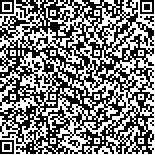| Quote
: |
邓龙,周德生,廖端芳,吴兵兵.姜黄及其配伍复方在脑病治疗中的应用规律[J].湖南中医药大学学报英文版,2017,37(7):753-756.[Click to copy
] |
|
| |
|
|
| This paper
:Browser 2887times Download 1004times |
| 姜黄及其配伍复方在脑病治疗中的应用规律 |
| 邓龙,周德生,廖端芳,吴兵兵 |
| (湖南中医药大学第一附属医院神经内科, 湖南 长沙 410007;湖南中医药大学药学院干细胞中药调控与应用实验室, 湖南 长沙 410208) |
| 摘要: |
| 目的 研究姜黄及其复方在治疗脑病中的配伍规律,为脑病治疗中应用姜黄提供理论依据。方法 收集古今名家含有姜黄的脑病治疗经验集23首方、综合性医书脑病治疗验方73首,并对96首方中的药物配伍规律进行统计、分析。结果 在96首含有姜黄的脑病治疗方中发现活血化瘀药使用频率高达27.33%,补虚药17.92%,清热药11.38%,解表药10.93%,平肝熄风药8.06%,化痰止咳平喘药5.02%,反映了脑病治疗方中同姜黄配伍的药物使用频率由高到低依次为活血化瘀药、补虚药、清热药、解表药、平肝熄风药、止咳平喘药。将具体配伍药物予以聚类分析可归纳为六类:第一类为姜黄,第二类川芎、当归,第三类红花、黄芪、甘草、丹参、桃仁,第四类僵蚕、白芍、葛根,第五类茯苓、大黄,其余为一类,由此可以直观的得出各类药性的药物同姜黄配伍的高频率代表。结论 依据以上结果得出姜黄能够活血化瘀、理气化痰,配伍补虚药以扶正祛邪,配伍清热药以清利头目,配伍解表药以上行开窍,配伍平肝熄风药以治风先治血等的结论,以便在临床脑病治疗中依据具体证候选择合适的配伍药物。 |
| 关键词: 姜黄 脑病 配伍规律 |
| DOI:10.3969/j.issn.1674-070X.2017.07.015 |
| Received:December 31, 2015 |
| 基金项目:湖南中医药大学"干细胞中药调控与应用实验室"开放研究项目(2015GXB01)。 |
|
| Application Rule of Turmeric and Its Compound Prescriptions in Treatment of Encephalopathy |
| DENG Long,ZHOU Desheng,LIAO Duanfang,WU Bingbing |
| (Department of Neurology, the First Affiliated Hospital of Hunan University of Chinese Medicine, Changsha, Hunan 410007, China;Laboratory of Stem Cell Control and Application of Traditional Chinese Medicine in School of Pharmacy, Hunan University of Chinese Medicine, Changsha, Hunan 410007, China) |
| Abstract: |
| Objective To study the compatibility rule of turmeric and its compound prescriptions in the treatment of encephalopathy, and to provide theoretical basis for the application of turmeric in the treatment of encephalopathy. Methods The 23 empirical prescriptions for the treatment of encephalopathy from doctors in all times, 73 empirical prescriptions for the treatment of encephalopathy from comprehensive medical books were collected. Compatibility rules of the 96 prescriptions were analyzed. Results In the 96 empirical prescriptions for the treatment of encephalopathy, the use of blood-activating and stasis-resolving drugs reached up to 27.33%, tonic drugs 17.92%, heat-clearing drugs 11.38%, exterior-releasing drugs 10.93%, drugs for calming endogenous wind 8.06%, drugs for resolving phlegm relieve cough and asthma 5.02%, which reflect the drugs use frequency that compatible with turmeric in treatment of encephalopathy from high to low frequency followed by blood-activating and stasis-resolving drugs, tonic drugs, heat-clearing drugs, exterior-releasing drugs, calming endogenous wind drugs, resolving phlegm relieve cough and asthma drugs. Clustering analysis of specific compatibility drugs could be grouped into six categories:the first category is turmeric; the second categoryisLigusticum wallichii and Angelica sinensis; the third category is safflower, astragalus, licorice, Salvia miltiorrhiza, peach kernel; the fourth category is the silkworm, white peony, pueraria; the fifth category is poria, rhubarb, the remaining drugs are the same category. We could intuitively summary the high frequency drugs which compatible with turmeric from different medicinal drugs. Conclusion Turmeric could remove stasis and regulate Qi and blood, regulating Qi-flowing for eliminating phlegm, which combined with tonify deficiency medicines could strengthen body resistance and eliminate evil heat-clearing, combined with heat-clearing medicines could make brain clear, combined with exterior-releasing medicines could induce resuscitate, combined with calming endogenous wind to promote blood circulation and calm endogenous wind. Therefore, we could select appropriate compatibility drugs by basing on specific syndromes in treatment of encephalopathy. |
| Key words: turmeric encephalopathy compatibility rule |
|

二维码(扫一下试试看!) |
|
|
|
|


